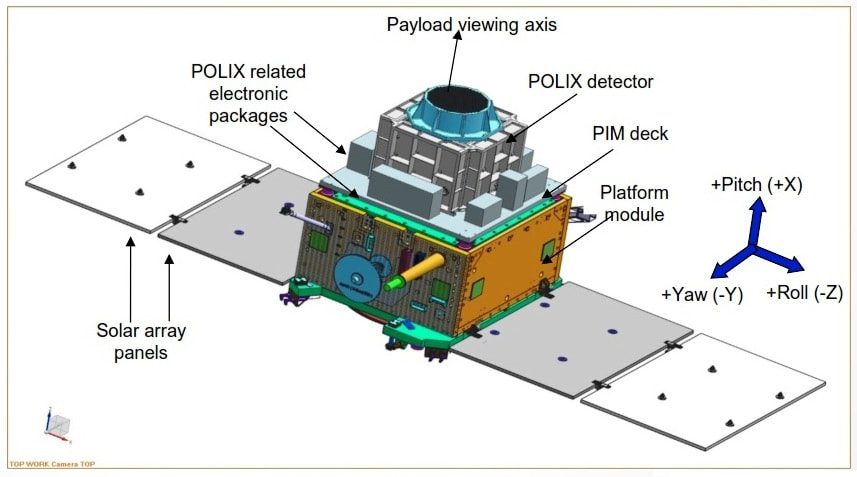Important Facts For Prelims
XPoSat
- 27 May 2023
- 4 min read
Why in News?
Recently, the chairman of the Indian Space Research Organisation (ISRO), S Somanath, addressed students and scientists during the 'User Meet of XPoSat' at the ISRO headquarters in Bengaluru.
- He emphasised the importance of effectively utilizing data from science-based space missions and encouraged Indian scientific institutions to identify talented students and motivate them to work with emerging data technologies like XPoSat.
What is XPoSat?
- About:
- XPoSat stands for X-ray Polarimeter Satellite.
- It is India's pioneering polarimetry mission aimed at studying various dynamics of astronomical sources in extreme conditions.
- It is only the world’s second polarimetry mission using X-Ray after NASA's Imaging X-ray Polarimetry Explorer (IXPE) that was launched in 2021.
- XPoSat stands for X-ray Polarimeter Satellite.
- XPoSat is a collaboration between the ISRO and the Raman Research Institute (RRI), Bengaluru, Karnataka.
- Scientific Payloads of XPoSat:
- XPoSat will carry two scientific payloads: Polarimeter Instrument in X-rays (POLIX) and X-ray Spectroscopy and Timing (SPECT) in a low Earth orbit.
- POLIX payload will enable the measurement of polarimetry parameters such as the degree and angle of polarization in the medium X-ray energy range of 8-30 keV photons originating from astronomical sources.
- SPECT payload will provide valuable timing and spectroscopic information within the energy range of 0.8-15 keV of X-ray photons.
- XPoSat will carry two scientific payloads: Polarimeter Instrument in X-rays (POLIX) and X-ray Spectroscopy and Timing (SPECT) in a low Earth orbit.
- Importance in Understanding Astronomical Sources:
- Polarimetry measurements offer an excellent diagnostic tool for comprehending the emission processes from various astronomical sources.
- Astronomical sources, including black holes, neutron stars, active galactic nuclei, and pulsar wind nebulae, present complex emission mechanisms that challenge the current understanding.
- By combining polarimetric observations with spectroscopic and timing measurements, researchers anticipate overcoming the limitations of the present understanding of astronomical emission processes.
- Polarimetry measurements offer an excellent diagnostic tool for comprehending the emission processes from various astronomical sources.
- Status of XPoSat:
- Testing for XPoSat is nearing completion, and the mission is in its advanced stages and is scheduled to be launched sometime in the year 2023.
Other Upcoming Missions of ISRO:
- Aditya-L1:
- India's first dedicated solar observatory mission, scheduled for June-July 2023
- Chandrayaan-3:
- A follow-up mission to Chandrayaan-2, scheduled for June 2023.
- Shukrayaan-1:
- India's first orbiter mission to Venus.
- Gaganyaan Mission:
- A manned space mission that will put astronauts 400km in orbit.
- NISAR:
- A joint Earth-observing mission between ISRO and NASA that will provide information on global environmental changes.
UPSC Civil Services Examination, Previous Year Question (PYQ)
Prelims
Q. Which of the following pairs is/are correctly matched? (2014)
Spacecraft Purpose
- Cassini-Huygens Orbiting the Venus and transmitting data to the Earth
- Messenger Mapping and investigating the Mercury
- Voyager 1 and 2 Exploring the outer solar system
Select the correct answer using the code given below:
(a) 1 only
(b) 2 and 3 only
(c) 1 and 3 only
(d) 1, 2 and 3
Ans: (b)





